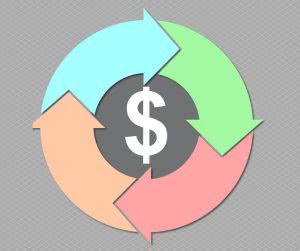 When you sign up for a student loan—whether federal or private—you’ll also sign up for a certain repayment plan. Options will vary from loan to loan. As time goes on, you may find that the monthly payments are too high, or that you’d save more money on a different plan. So it begs the question: is it possible to change student loan repayment plans?
When you sign up for a student loan—whether federal or private—you’ll also sign up for a certain repayment plan. Options will vary from loan to loan. As time goes on, you may find that the monthly payments are too high, or that you’d save more money on a different plan. So it begs the question: is it possible to change student loan repayment plans?
Can You Change Your Student Loan Repayment Plan?
When you take a federal student loan, you will automatically be put on the standard repayment plan. With this plan, your monthly payments are calculated based on the accrued interest over a term of 10 years. However, you are not stuck with this plan forever. You can change student loan repayment plans depending on your financial circumstances.
Why Would You Want To Change Student Loan Repayment Plan?
After you graduate, you will get a grace period before you have to start making your payments. This is to allow you to look for a job, start earning, and hopefully start saving too. Your repayment term typically starts 6 months from your graduation date. There are a few different scenarios wherein you may want to change your student loan repayment plan.

Scenario 1: You are struggling financially
If things do not go as planned and after the grace period you do not manage to get a job that gives you a steady income, you will find it difficult to meet your financial commitments. In that case, you may want to change your student loan repayment plan to one that lowers your monthly payments, such as an Extended Payment Plan. With this plan, the term of your loan is extended to more than 10 years to lower your monthly payments. What is important to know is that while it eases your financial burden for the moment, you will pay more by way of accrued interest over the life of the loan.
Alternatively, you may want to choose a plan that pegs your monthly payments to your income. This is called an Income-Based Repayment plan. With this plan, your monthly payments depend on how much you earn. If your income is low, you make lower monthly payments. With this plan too, you will end up paying a more over the term of the loan but it will ease your financial burden for the moment.
Scenario 2: You are struggling to keep track of your loans
During your 4 or more years in college, you may have taken out multiple loans. Each loan would have a different interest rate, different monthly payments, and different deadlines every month. Keeping track of all of these details can be overwhelming and put you at high risk for delayed payments or worse still, loan default.
One way to stay on top of your loans is by loan consolidation. By consolidating multiple federal student loans, you have to keep track of only one payment and one deadline every month, simplifying your payments considerably. The interest you pay on the consolidated loan is the weighted interest of your combined loans.
Another option is to refinance your student loans. Refinancing is similar to consolidation in that you combine multiple student loans into one. However, in this case, you are taking on a whole new loan with new terms and conditions. If you have been responsible with your payments thus far and have managed to build a decent credit score, you will be able to refinance with a much lower rate of interest.
With federal student loans, you have quite a bit of flexibility and can change student loan repayment plans whether you are looking to lower, increase or simplify your monthly payments, or get a better rate of interest on your existing loans.
Paying too much on your student loans? College Raptor can help!





